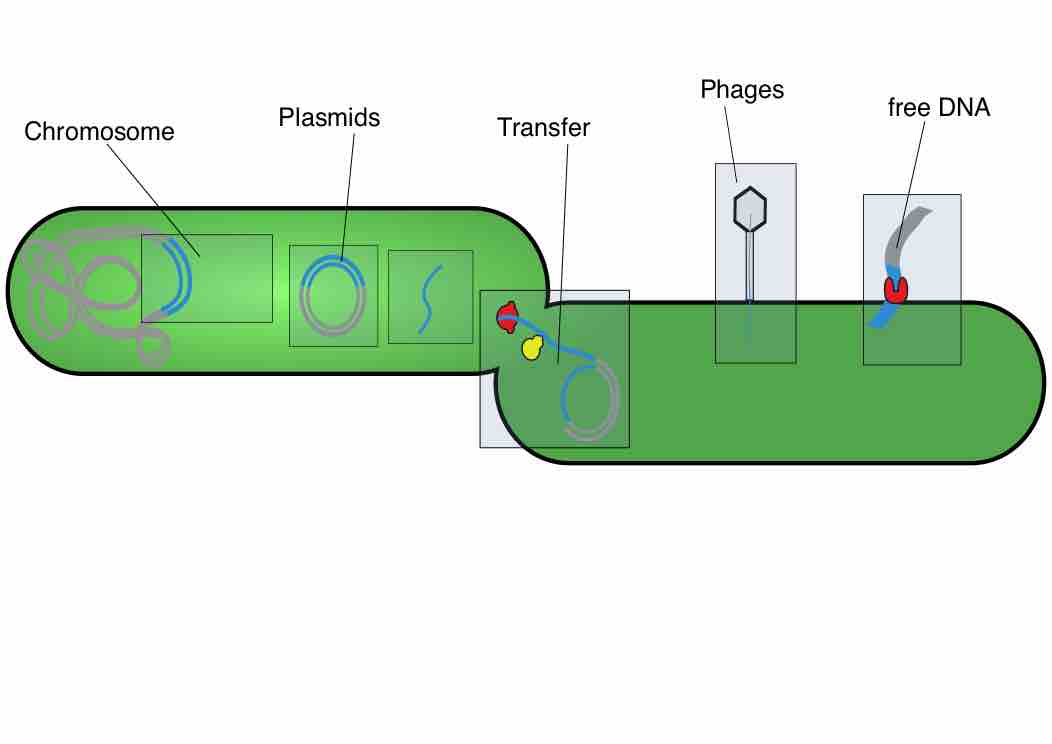Pathogenicity islands (PAIs) are a distinct class of genomic islands acquired by microorganisms through horizontal gene transfer. They are incorporated in the genome of pathogenic organisms, but are usually absent from those nonpathogenic organisms of the same or closely related species. These mobile genetic elements may range from 10-200 kb and encode genes which contribute to the virulence of the respective pathogen. Typical examples are adherence factors, toxins, iron uptake systems, invasion factors, and secretion systems. Pathogenicity islands are discrete genetic units flanked by direct repeats, insertion sequences or tRNA genes, which act as sites for recombination into the DNA. Cryptic mobility genes may also be present, indicating the provenance as transduction. One species of bacteria may have more than one PAI (i.e. Salmonella has at least 5). They are transferred through horizontal gene transfer events such as transfer by a plasmid, phage, or conjugative transposon .

Horizontal Transfer
Pathogenicity islands are transferred horizontally, this details some of the ways that occurs.
Pathogenicity islands carry genes encoding one or more virulence factors, including, but not limited to, adhesins, toxins, or invasins. They may be located on a bacterial chromosome or may be transferred within a plasmid. The GC-content of pathogenicity islands often differs from that of the rest of the genome, potentially aiding in their detection within a given DNA sequence. PAIs are flanked by direct repeats; the sequence of bases at two ends of the inserted sequence is the same. They carry functional genes, such as integrases, transposases, or part of insertion sequences, to enable insertion into host DNA. PAIs are often associated with tRNA genes, which target sites for this integration event. They can be transferred as a single unit to new bacterial cells, thus conferring virulence to formerly benign strains.